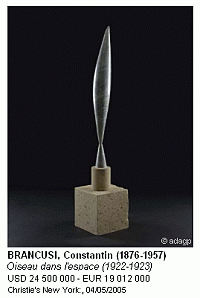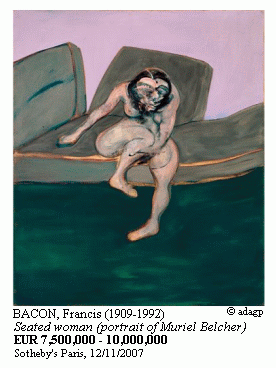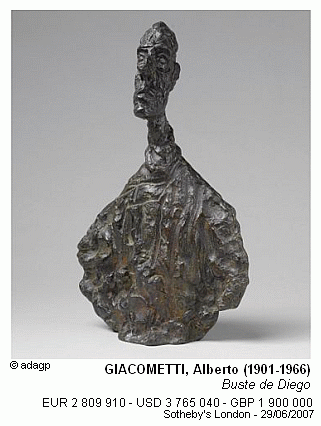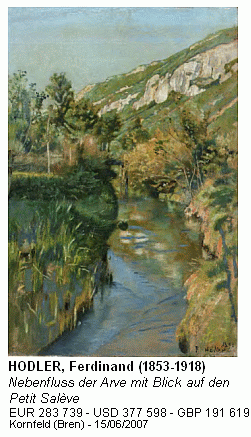The Making of Daliwood - Dalí & Film Comes to the Salvador Dalí Museum in St. Petersburg
| The Making of Daliwood - Dalí & Film Comes to the Salvador Dalí Museum in St. Petersburg artlover87788668898 |
 Salvador Dalí (Spain, 1904-1989), Metamorphosis of Narcissus, 1937. Oil on canvas, 51.1 x 78.1 cm. Tate. Purchased 1979. © Salvador Dalí, Fundació Gala-Salvador Dalí, Artists Rights Society, 2007. |
| ST. PETERSBURG, FL.- The Salvador Dalí Museum in St. Petersburg presents Dalí & Film, the first exhibition examining the profound relationship between the paintings and films of Salvador Dalí (1904-1989). Premiering on February 8, 2008 and running to June 1, 2008, the exhibition reveals how Dalí combined his skills in painting with the new and exciting possibilities of the moving image to define a new art. Dalí is perhaps the most recognizable and important artist of the twentieth century and the dream-like images he invented in his paintings are engraved in the public consciousness. This new exhibition demonstrates that Dalí, influenced by the illusionary space that can be created in painting, his surrealist inventions and his love of film, helped define the conventions of this new medium. His brilliant films and his film-inspired paintings created some of the most memorable and influential images in avant-garde art. “Dalí explored his obsessions in each medium in which he worked—the relationship between his paintings and his films provides a fascinating insight into his imagination,” said Hank Hine, Salvador Dalí Museum Executive Director. “There was a time when film convention was invented, was constructed frame by frame. Dalí was one of its most significant inventors. Painting was his resource. We are proud to host this presentation that explores the very nature of painting and film.” Featuring over one hundred works from collections from all over Europe and America, together with films, photographs, film scripts, and drawings, Dalí & Film opened at the Tate Modern in London, and the Los Angeles County Museum of Art, and will be displayed at the Museum of Modern Art in New York City in 2008. For the exhibit at the Salvador Dalí Museum in St. Petersburg a number of important works drawn from the Dalí Museum’s own extensive collection have been added, including The Disintegration of the Persistence of Memory (1952-54), and The Ghost of Vermeer of Delft which can be used as a Table (1934). Like the artist himself, Dali’s relationship with film is complex and contradictory. “The best cinema is the kind that can be perceived with your eyes closed,” Dalí wrote in 1927, recognizing both the power and mystery of the medium. Dalí approached film as both an inspiration and an outlet for experimentation. The cross-fertilization of ideas between film and painting can be seen in The First Days of Spring (1929) and The Persistence of Memory (1931), two paintings with compositions that dissolve into other images as they would in moving pictures. These works coincide with the artist’s first movie collaborations with the celebrated Spanish director Luis Buñuel in 1929-30. Just as Dalí brought new images into the popular imagination in his paintings, he also invented some of the most memorable images on film. From his fantastical imagination and obsession with dreams and the subconscious, unforgettable haunting images—such as the slicing of an eyeball with a razor and a hand infected with ants in Un Chien andalou (1929)—mirror the disturbing anatomic depictions in major paintings of that moment, including Apparatus and Hand (1927). It is no surprise that Dalí’s interest in film led him to Hollywood. While exiled in the United States during the Second World War, he gravitated to Hollywood to work on major studio productions with Twentieth Century Fox, Alfred Hitchcock, Walt Disney and the Marx Brothers. His dream-like vision proved ideal for the 1940’s movie industry where total immersion in Dalí’s imagination became possible for a mass audience—and where his impact still resonates today. Writing for The Guardian, JG Ballard (Empire of the Sun; Crash) commented: “We no longer live in a literary culture, and the human eye has been fine-tuned by a half-century of film and television. Dalí's paintings, with their distant horizon lines, pseudo-Renaissance perspectives and mentalised stage-sets, are naturals for the age of the plasma TV screen.” (May 26, 2007) The complete exhibition features his major film projects, including Un Chien andalou, (1929) L’Âge d’or (1930), Spellbound (1945), Chaos and Creation (1960)—the first time a major artist used video—and the Dalí/Disney animated short Destino (1946), seen alongside Dalí’s most famous paintings, including The Persistence of Memory (1931), The Metamorphosis of Narcissus (1937), as well as other major works on loan from the Museum of Modern Art, New York; Tate Modern, London; the Guggenheim, New York; San Francisco Museum of Modern Art; Museu Nacional d’Art de Catalunya, Barcelona; the Museo Nacional Centro de Arte Reina Sofía, Madrid; and the National Gallery of Canada. Dalí and Film is curated by Tate curators Helen Sainsbury and Matthew Gale (editor of Dalí and Film); Dawn Ades, Dalí scholar and curator of Salvador Dalí: Centenary Exhibition; Montse Aguer, Director, Centre d’Estudis Dalinians, Gala-Salvador Dalí Foundation; and Félix Fanès, curator of Dalí and Mass Culture. The exhibition in St. Petersburg is curated by William Jeffett, Curator of Special Exhibitions, Salvador Dalí Museum. The St. Petersburg presentation is made possible by Progress Energy, a Museum sponsor since 2002, whose continued support for arts provides a benchmark for corporate engagement in the community. Presenting Sponsors for the St. Petersburg exhibition include Ovation by JMC Communities and M&I Wealth Management with additional support from the Renaissance Vinoy Resort and Golf Club, and Visit St. Petersburg/Clearwater. |























